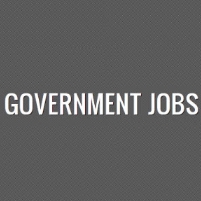Government Jobs Disappearing…Unlike Other Post-Recession Periods
Monday, April 09, 2012

Despite complaints on the Republican presidential campaign trail about President Obama’s alleged bias in favor of government spending, in fact his administration has actually seen a contraction in the size of government, which has slowed the nation’s economic recovery from the Great Recession.
When economic recessions occur, declining tax revenues often force state and local governments to cut their budgets by laying off employees, but once the recession is over and economic recovery begins, public employment typically rebounds and then grows slightly over pre-recession levels. Thus over the first 30 months after the recessions of 1981, 1990 and 2001, under the presidencies of Republicans Ronald Reagan, George Bush and George W. Bush, public sector employment at all levels grew by an average of 2.8%. In contrast, in the 30 months since the end of the 2007 Great Recession, government employment has actually decreased by 2.5%, despite widespread public knowledge that essential personnel like teachers, firefighters and police were included in the layoffs.
Why has this happened? The political economy of the Great Recession shrunk total government in four ways. First, in 2008 the worst real estate and stock market crashes in decades led to rising unemployment and declining state and local government tax revenue, which depend heavily on property and sales taxes, while balanced budget laws led to spending cuts that resulted in decreased government employment. Second, in 2009 political gridlock in Washington sharply limited the size of the stimulus in the Recovery Act. Third, despite the recovery that began in late 2009, real estate values have not yet rebounded to pre-Recession levels, so local tax revenues have remained low. Fourth, in the November 2010 elections many of the very people hit hardest by the real estate and stock market crashes became the core of the Tea Party wing of the Republican Party, and sent numerous candidates to Washington who have since blocked attempts to use federal money to help state and local governments.
The upshot has been one of the most remarkable periods of government austerity in the last 50 years, as total government spending had the steepest annual decline in three decades, total government employment fell by the fastest rate in more than 60 years, and federal spending and federal employment grew by the slowest annual rate since the 1950s.
What has been the cost of all this public-sector austerity? The Economic Policy Institute estimates that if public-sector employment had grown since June 2009 by the average amount it grew in the three previous recoveries (2.8 percent) instead of shrinking by 2.5 percent, there would be 1.2 million more public-sector jobs in the U.S. economy today, which would have helped preserve about 500,000 private-sector jobs, yielding a total of 1.7 million more jobs than we currently have.
-Matt Bewig
To Learn More:
Barack Obama, Austerity President (by Derek Thompson, The Atlantic)
The Incredible Shrinking U.S. Government (by Jordan Weissmann, The Atlantic)
Public-Sector Job Losses: An Unprecedented Drag on the Recovery (by Josh Bivens, Economic Policy Institute)
The Incredible Shrinking Government (by Noel Brinkerhoff and Ken Broder, AllGov)
- Top Stories
- Unusual News
- Where is the Money Going?
- Controversies
- U.S. and the World
- Appointments and Resignations
- Latest News
- Trump Deports JD Vance and His Wife
- Trump Offers to Return Alaska to Russia
- Musk and Trump Fire Members of Congress
- Trump Calls for Violent Street Demonstrations Against Himself
- Trump Changes Name of Republican Party






Comments